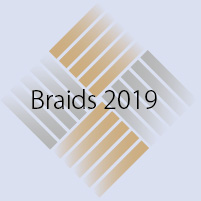
4th International Conference on Braids, Iga
13-18 October 2019

 |
4th International Conference on Braids, Iga 13-18 October 2019 |
 |
||||
| Home | Programme | Publication | Iga | Registration | ||
| Lecture | Workshop | Evening events | Exhibition | Tour | ||
| Evening talk | ||||
| Time | Lecturer | Title | ||
| Tue. 17:00-17:45 | Joy Boutrup | Research into European Braiding | ||
 |
European braids have not been analysed or described in detail until recently. The work of Noémi Speiser on the manuscripts with loop braiding instructions made it an open question of how far such braids were to be found in on objects in museums and other collections. As loop braiding uses no tools only the braids themselves will bear witness about the techniques used. A research into European braids started about 15 years ago and the majority of the investigated braids are loop braided. Loop braiding seems to have been the main production method applied by professionals as well as amateurs throughout the Middle Ages and the Renaissance. Only a small part of this research is as yet published. The lecture will contain examples of objects with braids, analyses and reconstructions of the most unusual braids together with the known historical illustrations of loop manipulation. | |||
 |
 |
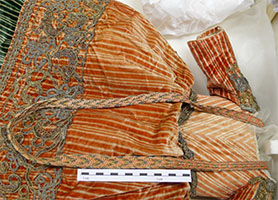 |
 |
|
| Time | Lecturer | Title | ||
| Tue. 17:00-17:45 | Gil Dye | Lace and Laces in the 16th Century | ||
 |
Is lace a sturdy tie or a fragile fabric? In the early 1500s all references to 'lace' were for cords and ties, a century later men and women were wearing wide linen collars made or edged with the fine white fabric we now know as 'lace'. In this informal talk Gil will be sharing some of the discoveries she has made during her research into bobbin lace of that period and related techniques for braids and cords. | |||
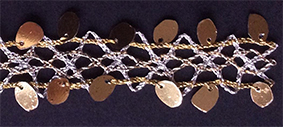 |
 |
 |
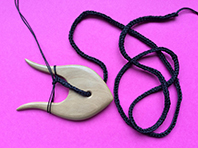 |
|
| Time | Lecturer | Title | ||
| Fri. 17:00-17:45 | Katia Johansen | Conservation issues with braids | ||
 |
Trained as a textile conservator and after a lifetime in the field, I would like to offer a lecture on textile conservation and how participants may want to consider various aspects of their own production as well as their private collections to preserve them as well as possible. This includes choice of materials and avoiding detrimental combinations, best techniques, cleaning recommendations, dyeing and fading, tarnishing, handling, documentation and labeling, sharing and publishing, presentation and storage. Illustrations and actual samples of degraded and mistreated textiles will illustrate dangers and damages that can be avoided. | |||
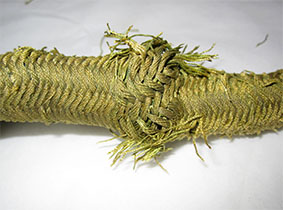 |
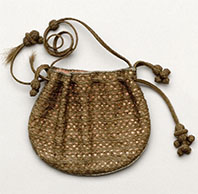 |
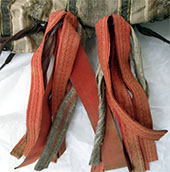 |
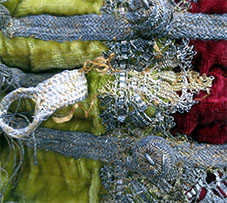 |
|
| Time | Lecturer | Title | ||
| Fri. 17:00-17:45 | Ruth MacGregor | A Celebration of Small Woven Things | ||
 |
Utilitarian or decorative, small woven bands can make a big difference. A beautiful blanket becomes a framed masterpiece with a finish of trim, ribbon, applied band or fringe. Household goods become durable treasures when they have hidden reinforcements, braided piping, a constructed closure or even a humble hanging loop. Garments thrill to the touch of brocade, playful ricrac, a subtle accent line or flash of color. Ribbons, trims, tapes and accents are embedded in the fabric of most human cultures, and this presentation explores these small, helpful textiles. In addition to the history and many uses of woven bands, the lecture introduces many of the tools weavers have used to create them – a range of implements from the most simple to the surprisingly complex. Though not comprehensive, the scope is wide-ranging, presenting traditions from Scandinavia to northern Africa, from western Europe to Japan. The talk focuses on these small textiles and the widely varied tools and techniques used to create them. | |||
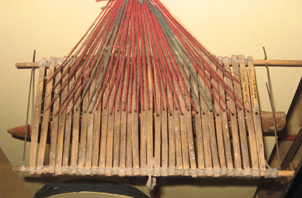 |
 |
 |
 |
|
| Bazaar | ||||